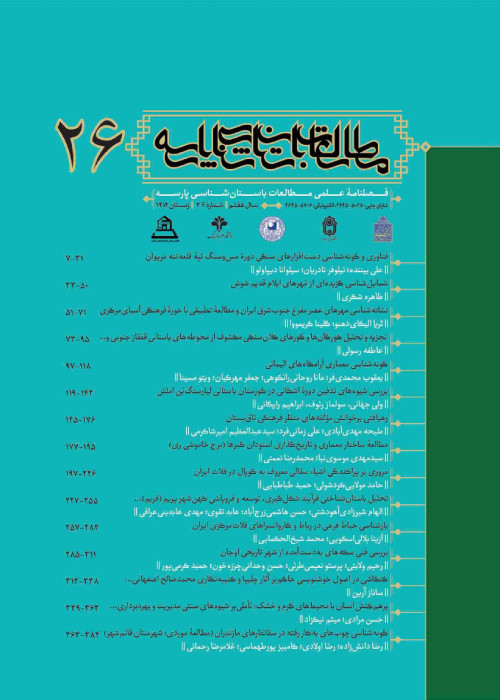Historical Sociology of Qajar Royal Wall Paintings
The idea and inspiration of an artist derived from the life experiences which artist gained from the interaction and exchange with the society and surroundings. This society is also affected by the conditions and incidents that have universal influence on societies in local and regional levels. Based on this flow of influences, the paintings can be recognized as the pictorial history of every society which can present the historical conditions and social specifications of the time and place the paintings created. This becomes more important when the work of art is custom-made or aimed at announcing and displaying authority or a state-political statement. Studying the Qajar royal wall paintings from the sociological point of view, will open up a door to the current culture of the society and the ideology of that era. Due to so many reasons these wall paintings are the most important in the artistic works of the Qajar period. The great variety and diversity in the subjects, color palettes, and theme, the compilation of tradition and modernism in the style all represent signs of a desire to achieve a great goal, which is the same as the influence and authority of the sovereignty. The complexities of the social and political conditions of the Qajar dynasty on the one hand and the correlation between the artistic movements and these conditions on the other hand, make the solid studying and analyzing the wall paintings of this period , regardless of the social and political influence of this historical period, difficult or even in vain.In this research, after presenting the definitions related to historical sociology and studying the relation between the histo-sociology and studying the works of arts, effective factors in the study of the wall paintings of the Qajar period are discussed. As the first factor, the social class of the painters and patrons of these paintings is discussed. The painters categorized based on their work, style and also the type of artwork they create. Based on the fact that these paintings were designed and implemented for the purpose of transmitting a certain message, the next factor was the audience of this type of paintings, according to which the language and composition of the design and images were determined. After examining these components, the influence of royal wall paintings of Qajar in historical sociology is discussed on the basis of social and political specifications of that time. The purpose of this discussion is not to consider these spesifications and factors in a general overwiew, but to study the role of different factors in the process of formation of the royal paintings of this period. This research is based on descriptive-analytical and comparative approach and using library studies and observations of works, investigates the wall paintings of the Qajar period in terms of structural and visual elements, identifying different aspects of them. The impact of historical sociology and its relationship with the wall paintings of the Qajar period is considered as the main objective of the research. The main question in this study is whether the Qajar royal wall paintings represent the social and political relations at the national and international levels of the Qajar era. The impressive influence of the political, social and historical conditions on the Qajar royal wall paintings as a result of this research has made it possible for these wall paintings to be valid and credible clues and documents in the studies of sociology of this historical period in Iran.
Studying Qajar painting helps importantly to identify and study the art and culture of Qajar dynasty. Existence of lots of paintings, diversity of designs, color and subject, combining tradition and modernism were factors for selecting this dynasty to investigate. As the painting is the visual history of each era, sociology studying of painting in this dynasty will make one to understand common culture and thinking of people in that society.
- حق عضویت دریافتی صرف حمایت از نشریات عضو و نگهداری، تکمیل و توسعه مگیران میشود.
- پرداخت حق اشتراک و دانلود مقالات اجازه بازنشر آن در سایر رسانههای چاپی و دیجیتال را به کاربر نمیدهد.



